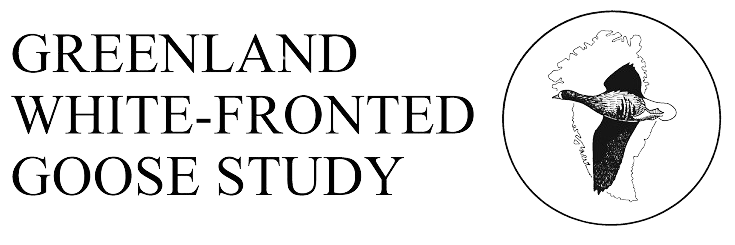History
Berry (1939) was tantalising in his descriptions of White-fronted Geese in the Solway region, but perhaps his site at “…a locality near the centre also is a regular haunt of this species. Elsewhere it is rare and uncommon. No change in status has been reported” related to this site. A-W (1963) mapped the site and reported regular numbers of 400-500 geese. Later, R&O (1979) presented annual peak counts of between 250 and 530 birds between 1965/6 and 1978/9, Although annual peak counts varied a great deal, the time series suggested a hint of a decline with less than 300 geese counted in the last three winters. R&O (1979) speculated that the decrease in numbers since 1962/3 coincided with increases in the numbers of Greylags using the area, which also attracted more attention from wildfowlers. It is clear that especially towards the end of the period when White-fronted Geese were legal quarry, they contributed to the local kill and hunting pressure was severe.
Status
International importance (R&O 60). Maximum annual counts suggest a gradual increase since 1978, although there were clearly two major influxes in 1987 and 1989 which took the peak counts to 550 in both years. Otherwise, numbers varied between 250 and 500, but there has been a marked decline since 1998 to just over 200 in the last three years.
Maximum winter counts:
Breeding success: Although variable and data are not available for every year, there does seem some evidence for a long term decline in the percentage of young in this flock (first diagram below), with the proportions of young failing to exceed even 5% since 2001. The production of young amongst the birds wintering at Loch Ken has been lower than on Islay overall (second diagram below), but the sample size is smaller than amongst similar sized flocks.
Feeding sites and habitat: The traditional areas used during A-Ws (1963) day has changed, the geese have increasingly deserted the area at the head of Loch Ken, where Greylags are now very plentiful, contributing to the discussion about interactions between the two species. Stubble feeding occurs in autumn, but later an array of grassland types are used throughout the winter, especially improved grassland and reseeds. Wetlands and inundation marsh adjacent to a large (and long-established) hydro-electricity generation loch are also exploited. They show some preference for certain regularly used areas which may suffer less disturbance. Favoured areas are centred on Mains of Ducrae, but the geese frequently use the Parton area, Finnieness, Cogarth, Waterside, Blackwater of Dee and Crossmichael areas.
Roosting sites: Loch Stroane was formerly used as a roost, especially in open weather, but this no longer seems to be the case now. The flock probably uses Loch Ken as the regular roost site.
Habitat change: None known to affect the geese.
Aircraft disturbance: Not known.
Hunting disturbance: Throughout the recent past, regular and intense commercial shooting of Greylags has occurred in the vicinity of areas used regularly by the Whitefronts and there has been problems with hunting in and around this site in the past. It may be that the considerable hunting pressure on the Greylag Geese with which the White-fronted Geese associate has had an effect both on the distribution of the geese and their abundance.
Agricultural disturbance: Not likely to be more of a problem than anywhere else in Scotland. It is not clear to what extent such activity could have contributed to declines.
Site safeguard: Areas used by the geese include part of Loch Ken RSPB Reserve, the River Dee (Parton-Crossmichael), Kenmure Holms SSSI and Threave and Carlingwark Loch NCR SSSI. These areas were designated as the Loch Ken and River Dee Marshes SPA and Ramsar site in 1992.
SNH Natural Heritage Zones/Area: Western Southern Uplands and Inner Solway
Threats: Some local hunting of Greylags offer potential difficulties of disturbance, wounding and accidental killing of White-fronted Geese at this site.
Linkages with other sites: 18 marked birds have been seen at Loch Ken, including 6 geese ringed in Eqalungmiut Nunaat in west Greenland which suggest this is the area where many of these wintering birds originate. 2CC was caught in Isungua Greenland in 1989 and was a long stayer, wintering every year until 1999/2000. Intriguingly this bird twice visited Islay within winters, a very rare observation amongst collared birds. He arrived on Islay on 7th October 1994, but had moved to Loch Ken by 7th November and again on 11th and 12th October 1996 before appearing first seen at Loch Ken 17th November 1996. A5X and C3D caught in Isungua Greenland in 1992 also wintered here. Most of the other reports involve Wexford bird shifting to Loch Ken for a single year (4 birds), three of which returned to Wexford subsequently, one bird that changed wintering sites almost every year and other movements.
